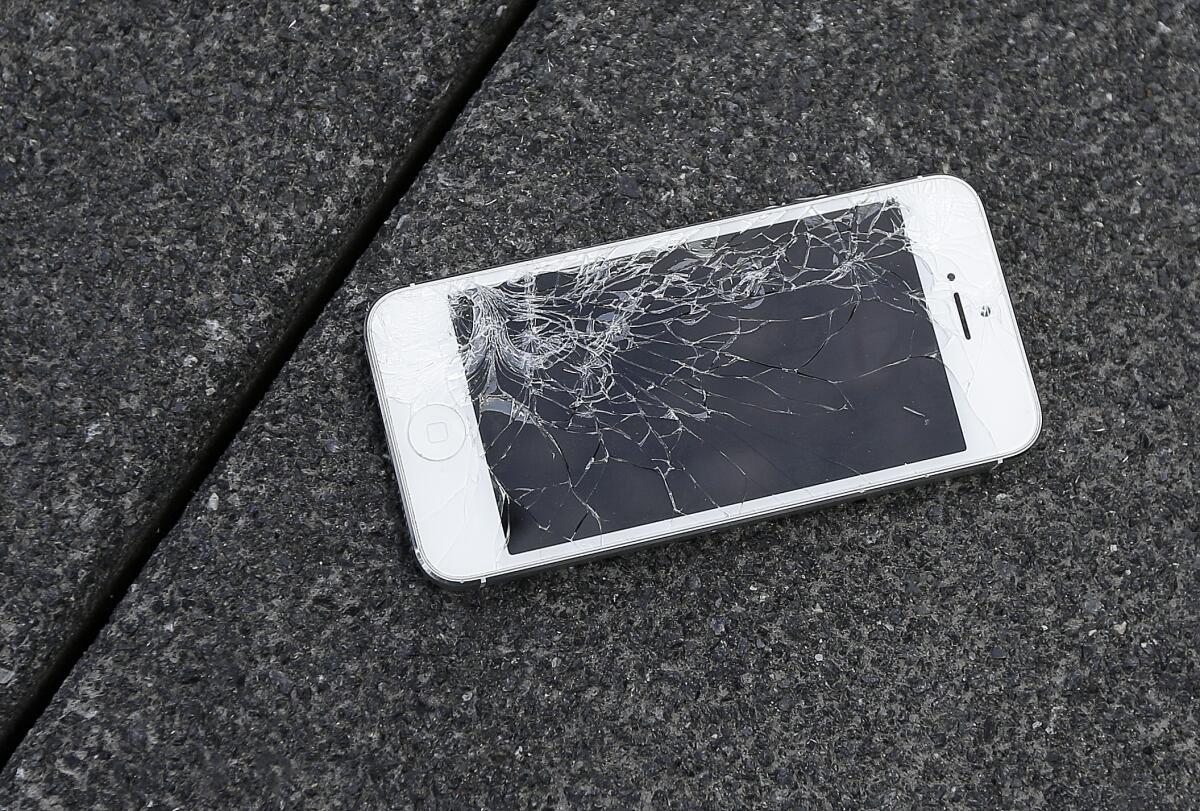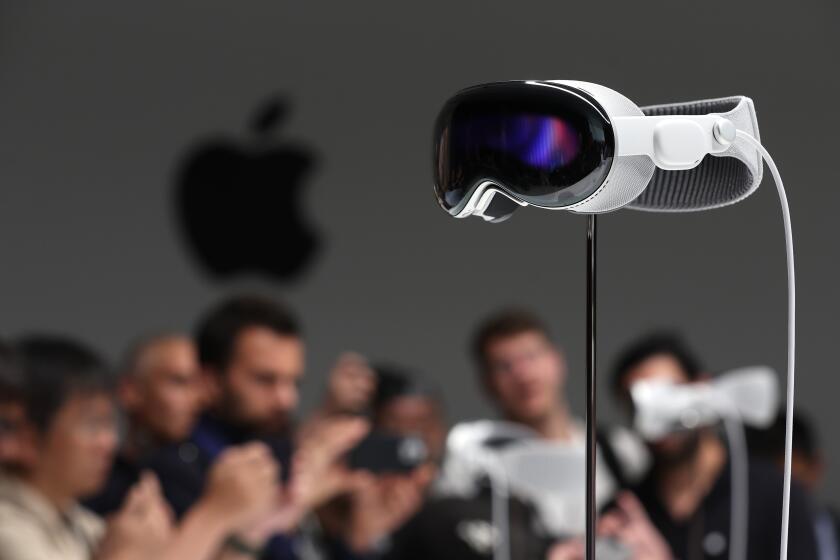Column: Apple has fought the right to repair devices for years. Why did it just make a U-turn?

For years, the nationwide fight for the so-called right to repair has reliably run into the same foe: Apple.
The repair industry, consumer rights organizations and DIY fixers have built a lively movement to try to push tech, appliance and auto companies to make their devices fixable, more open and more sustainable. Time and again, theyâve found themselves staring down the biggest company on the planet.
âApple has been the biggest opponent,â said Kyle Wiens, the chief executive of IFixit and a national advocate for repair laws. âWe had a great bill in Washington state just this year that Apple shot down.â
Now, however, it appears that out of the blue, this most powerful foe has suddenly turned into a formidable ally. In a surprise move, Apple has come out in favor of California legislation, SB 244, authored by state Sen. Susan Talamantes Eggman (D-Stockton), that would guarantee consumers access to parts and instructions that enable them to fix their stuff.
A state bill would require device manufacturers to make it easier for consumers to get their gadgets fixed. It has strong support from voters â but not tech companies.
Appleâs support not only clears the path for this bill to become law, it pretty much opens the floodgates for the right to repair just about everywhere, at least when it comes to consumer electronics. It may now be only a matter of time before the right to repair is enshrined in law at the federal level â thatâs how big a change it is.
Iâve written about Eggmanâs bill in these pages before and encouraged lawmakers to embrace it, which, so far, they have â it passed out of committee with a unanimous 38-0 vote.
Advocates say right-to-repair laws are good for consumers, who can choose to repair their own devices and save the money itâd take to replace them; good for the planet, which sees fewer devices hit the landfill; and good for the communities where repair shops and services create jobs. (This is why right-to-repair bills routinely amass such high levels of bipartisan support; theyâre often seen as no-brainers.)
Apple and the tech lobby, meanwhile, have argued for years that devices are so complex that only licensed specialists can be trusted to fix them and that private repair presents a security risk. And itâs not just Apple but Microsoft and most major device manufacturers that have long opposed the calls for legislation asking them to provide spare parts and repair manuals.
See, Apple and the other companies that build computers, tablets, phones and consumer electronics had a vested interest in keeping DIY fixers and third-party repair companies from fixing their stuff â if it broke, consumers would simply have to buy more of them! This tech lobby has dedicated serious resources to opposing right-to-repair laws that have been introduced in states across the country.
Two years after Mark Zuckerberg bet his company on a virtual reality future, Apple in effect declared that vision dead with its announcement of a decidedly antisocial face computer.
Apple has always loomed largest. Itâs the biggest and most influential device manufacturer, and it carries enormous weight with legislators. Which is why it matters that Apple sent a letter to Eggmanâs office this week stating that âtoday, Apple writes in support of SB 244, and urges members of the California legislature to pass the bill as currently drafted.â
The repair community was thrilled.
âItâs great to see [Apple] realize that we need to establish a set of baseline rules to govern the circular economy,â as Wiens put it.
Why the change of heart? Iâd point to several reasons. First, New York already passed a right-to-repair law last year, Minnesota passed one this year, and manufacturers such as Apple are going to have to comply with those as it is. Theyâre a sign of the times, and Apple can see which way the wind is blowing. The company probably fought for some friendly treatment in the amendment process, to protect its ability to authorize repairs and sell official parts. It may also know that consumers arenât as keen to buy a new phone every year or two, and that the repair business is growing â and may seek to consolidate its control over the market segment.
Finally, having watched this trend coming for years now, Apple has been building an industry lead on repairable devices â its iPhone 14 model won good reviews from the repair community because of significant steps that designers had taken to see that the device was easier to fix. By announcing its support of the right to repair, Apple gets to look like the good guy and perhaps get a jump on the competition, too.
Not that anyoneâs complaining.
Of course, the repair community is not resting on its laurels.
âIâm thrilled with the California bill, but it is Step One,â Wiens said. âWe expect other states to continue to ratchet this up.â
And then, he said, the right to repair needs to go nationwide.
âWhat we need to address at the federal level are the copyright problems that canât be solved at a state level,â he said, specifically, Section 1201 of the Digital Millennium Copyright Act, which contains an onerous ban on repair tools. âWe need to ban parts pairing, where manufacturers control what parts you can use in your devices. We need to make sure that repair software works in rural areas without internet access.â
But for now, itâs time to celebrate.
âPeople around the world are tired of throwaway culture and are demanding the right to fix our things,â said IFixitâs sustainability director, Elizabeth Chamberlain, who has been writing policy and lobbying on behalf of SB 244. âWelcome, Apple, to Californiaâs vision of a more fixable future.â









